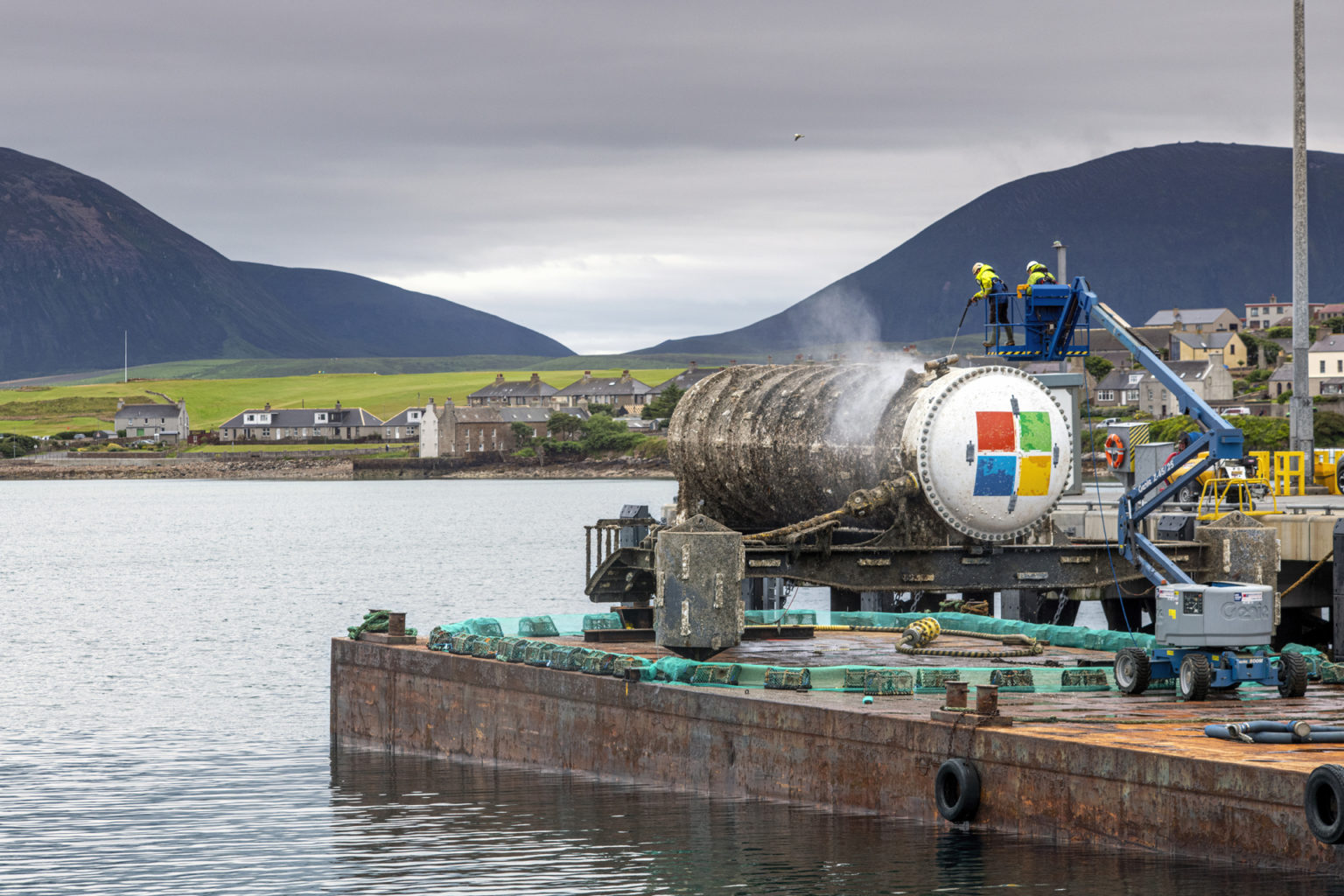After several years of research on Project Natick, Microsoft recently released a few findings of their first experiment with underwater datacenters. While the data is still under analysis, the available results seem promising. In May 2018, Microsoft placed a datacenter with 864 servers, 117 feet under the sea near the Scottish coast. Microsoft pinned the idea against the fact that more than half of the world’s population lives within 120 miles of the coastline and having an underwater datacenter would increase data access speeds and promote sustainability in growth.
The datacenter ran completely on renewable energy for 2 years, on a grid that would be unbelievably small to run a land based datacenter. They believed that in an untouched environment having controlled temperature with dry Nitrogen inside the capsule instead of Oxygen to prevent corrosion, data centers would be more efficient.As they expected, the failure rate was found to be one-eighth of what would be observed in a normal datacenter on land. Spence Fowers, a key member of Project Natick said, “As we are moving from generic cloud computing to cloud and edge computing, we are seeing more and more need to have smaller datacenters located closer to customers instead of these large warehouse datacenters out in the middle of nowhere”.

While the outside of the container was found to be covered in algae and anemones, it was very well maintained on the inside. In a lights-out datacenter, the servers are usually replaced every five years and hence for an underwater datacenter with a considerably low failure rate, they can just take the faulty servers offline without much effect on the performance. The results also proved that there isn’t a requirement for water cooling, given that the resources are being depleted anyway.
Microsoft believes that they are past the point of Project Natick being an experiment and are now in a phase to move from land datacenters to this far more sustainable alternative. With rapid deployment, low lartency and sustainable development, underwater datacenters look like a win-win situation as of now. There are no emissions and the life of these datacenters is estimated to be around 20 years(Source:Project Natick Website), with server servicing at 5 years. Moreover, all the components are made using 100% recycled material and will be recycled at the end of their life. Hopefully, we will soon have more positive data from the successful experiment.









